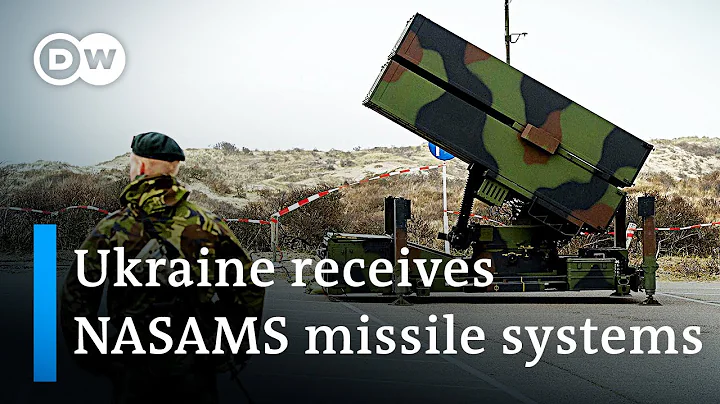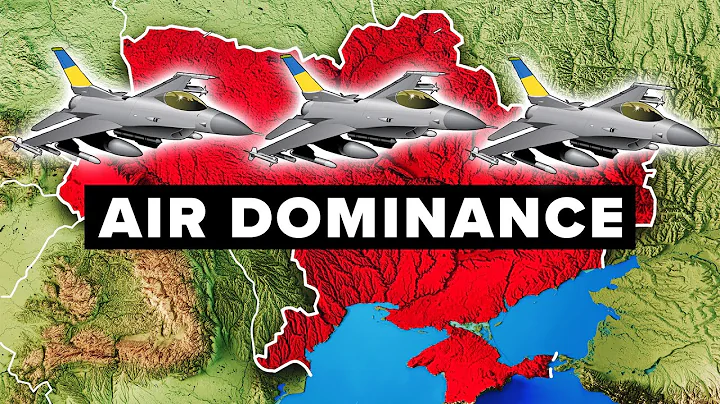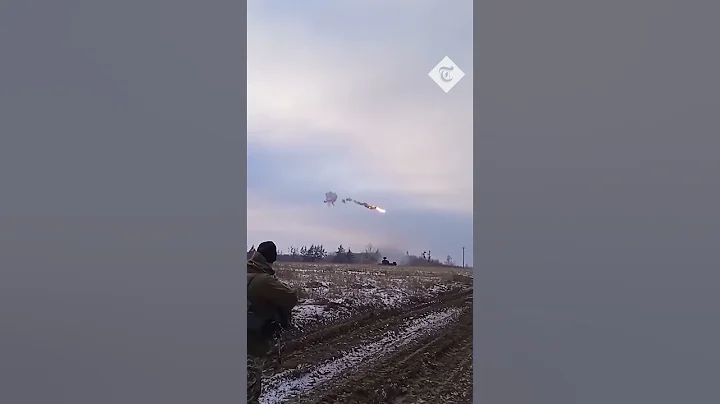According to a report from Global Network citing the Ukrainian Satellite News Agency, on July 1, Ukrainian Air Force Command spokesperson Ignat said, “Our existing air defense system can only deal with enemy aircraft, but cannot deal with incoming aircraft. Attack missile . missile defense system is a more powerful, more modern, faster missile. That is, the missile must be shot down with higher tactical and technical performance than the missile used to destroy ground targets. These missile defense systems are now deployed in Poland and Romania and Russia is very reluctant to see these systems close to itself. They can shoot down cruise missiles and ballistic missiles . This weapon is not only useful for us, it is very useful. Necessary. "

The anti-missile system currently deployed by the United States in Poland and Romania is the land-based "Aegis" anti-missile system and its equipped "Standard-3" missiles. Ukraine mentioned the anti-missile systems deployed by Poland and Romania. The system is very clear, that is, it hopes that the United States can provide Ukraine with the land-based "Aegis" anti-missile system and its equipped "Standard-3" missiles to defend against Russian air missile attacks. I have to say that Ukraine really opened its mouth this time. Biden administration officials have previously hinted that the United States will provide Ukraine with the "National Advanced Surface to Air Missile System" (NASAMS), which is jointly developed and produced by the United States and Norway. Moreover, this surface-to-air anti-missile system was previously requested by Ukraine. of. Biden also made it clear at the G7 summit that he would provide surface-to-air missile defense systems to Ukraine. Unexpectedly, Ukraine's asking price has actually gone up a level. It wants the U.S. land-based "Aegis" anti-missile system and its supporting "Standard-3" missiles.
The "Aegis" anti-missile system is an important part of the European and global anti-missile system built by the United States and NATO
The "Aegis" combat system (ACS) is an advanced command and control system that uses powerful computers and radar to track and guide weapons to destroy enemy targets. It is mainly composed of the Aegis Weapon System (AWS), the rapid response component of the Aegis Air Defense Warfare (AAW) capability, the Phalanx Close-in Weapon System (CIWS) and the Mark41 Vertical Launch System. Among them, the Aegis weapon system is the core of Aegis, including the AN/SPY-1 radar, MK99 fire control system, weapons control system (WCS), command and decision-making suite, and standard missile series weapons; the Aegis combat system consists of advanced automatic detection and tracking multi-functional three-dimensional control passive electronically scanned array radar - SPY-1. Known as Fleet Shield, the SPY-1 high-power radar is capable of simultaneously performing search, tracking and missile guidance functions up to 100 nautical miles (190 kilometers). Computer-based command and decision-making elements are at the heart of the Aegis Combat System, and the Threat Assessment and Weapons Allocation (TEWA) capabilities from the Navy's Tactical Data System (NTDS) enable the Aegis Combat System to operate simultaneously against nearly any type of threat.
It is worth noting that the initial development of the "Aegis" anti-missile system was mainly a sea-based version, which was used on large warships to intercept the opponent's anti-ship missile . Later, the U.S. sea-based "Aegis" became part of the U.S. national missile defense strategy and the NATO European missile defense system, enabling the Aegis system to perform sea-based ballistic missile defense functions to counter some short-range and medium-range missiles. Rival countries of ballistic missile .

As time went by, the United States developed a land-based version of the Aegis anti-missile system. The land-based Aegis is a land-based variant of the Navy's Aegis weapon system, which contains advanced radar capable of tracking enemy missiles and guiding interceptor rockets to shoot them down. It is also equipped with the MK-41 vertical launch system . The system combines land-based versions of various components used on the Aegis ship , including the deckhouse, AN/SPY-1 radar, Mark 41 vertical launch system (VLS) and SM-3 missiles. The land-based version of the Aegis anti-missile system is designed to detect, track, engage and destroy ballistic missiles traveling outside the atmosphere. Its technical performance is almost identical to the system used by the US Navy's Aegis destroyer .
However, compared with the sea-based version of the "Aegis" system, the land-based "Aegis" system is more restricted by the environment and lacks flexibility. It can only defend at a fixed location and is a typical self-defense weapon. At present, the land-based "Aegis" is mainly deployed by the United States in Deveselu, Romania and Poland. These deployed land-based "Aegis" are mainly equipped with "Standard-3" missiles.
The "Standard-3" missile was originally an important component of the U.S. Navy's theater ballistic missile defense system. It is also a medium- and long-range high-level ballistic missile interceptor, mainly used for anti-ballistic missile purposes. The "Standard 3" missile was jointly developed by the American Raytheon Company and Japan's Mitsubishi Heavy Industries and was developed on the basis of the Standard 2 air defense missile. Together with the Aegis system, it forms the U.S. military's land-based and sea-based medium- and long-range ballistic missile defense systems. The "Standard-3" missile is 6.55 meters long, has a wingspan of 1.57 meters, and a missile diameter of 0.34 meters. Compared with the Standard 2 missile, the "Standard 3" missile uses a three-stage engine and adds a three-stage rocket thruster, making the "Standard 3" missile a launch height of 240 kilometers and a maximum range of 500 kilometers. The "Standard-3" missile also uses a new GPS/INS missile system, which has very high accuracy characteristics. Thanks to its extremely high interception accuracy, the "Standard-3" missile adopts a collision-type kinetic energy interception mode. At present, the United States has equipped 44 sets of land-based "Standard-3" air defense missiles. The cost of "Standard-3" missiles is very expensive, with the current cost of each missile being US$11.83 million.

The performance of the land-based "Aegis" equipped with "Standard-3" missiles far exceeds NASAMS, but the possibility of the United States providing it is very small
The "National Advanced Surface to Air Missile System" that the United States is preparing to provide to Ukraine is a distributed and A networked short- and medium-range ground-based air defense system jointly or developed by Norway's Kongsberg Defense and Aerospace (KDA) and Raytheon . The system can defend against drones, helicopters, cruise missiles, unmanned combat aircraft and warplanes. NASAMS is the first ground application of the ground-launched AIM-120 medium-range air-to-air missile, with an effective range of up to 30 kilometers and an altitude of 21 kilometers. However, the performance and cost of the "National Advanced Surface to Air Missile System" are obviously not comparable to those of the land-based "Aegis" system and the "Standard-3" missile.
It is worth noting that, as a spokesman for the Ukrainian Air Force said, Russia is very reluctant to see the U.S. land-based "Aegis" provided to Ukraine, because it will pose a greater threat to Russia's ballistic missiles and cruise missiles. Putin has repeatedly criticized the United States for violating the 1997 Russia-US Relations Agreement. The main basis is that the United States has deployed land-based "Aegis" systems in Poland and Romania, posing a serious national threat to Russia. At the beginning of this year, in the security negotiations between Russia, the United States, and NATO, in addition to the issue of NATO's eastward expansion, the land-based "Aegis" anti-missile system deployed in Poland and Romania was also a major focus that Russia hoped to discuss.
Can the United States agree to Ukraine’s request? If it were not in a wartime state, the United States would be very willing to deploy land-based "Aegis" and "Standard-3" missiles closer to Russia, but it may be very difficult now.

First of all, if this weapon system is provided to Ukraine, Russia's response will be even greater; secondly, the cost of land-based "Aegis" and "Standard-3" missiles is very high, and they are deployed in Poland and Romania. The land-based "Aegis" system is actually controlled by the US military. According to the current situation, if this system is provided to Ukraine, it can only be controlled by the Ukrainian army. For the US military, this is a free gift. , very uneconomical; thirdly, the land-based "Aegis" is an important achievement of the US military-industrial system. If any accident occurs in Ukraine, the reputation of the US military's military-industrial products will be greatly affected.
I have to say that as the war continues, Ukraine’s asking price is getting higher and higher. Now it depends on whether the United States will provide Ukraine with this high-priced land-based anti-missile system for free. But it is worth noting that this It may be just the beginning, and Ukraine’s asking price for U.S. military aid may be higher in the future.





















